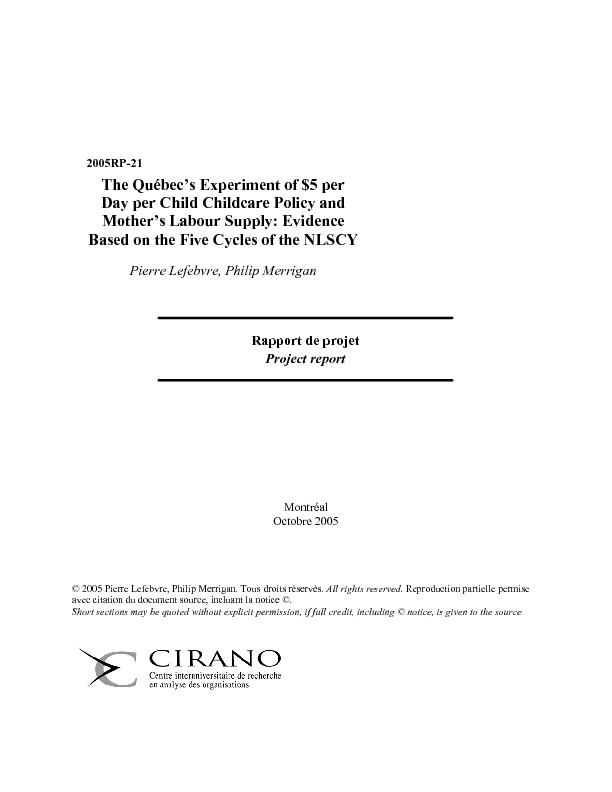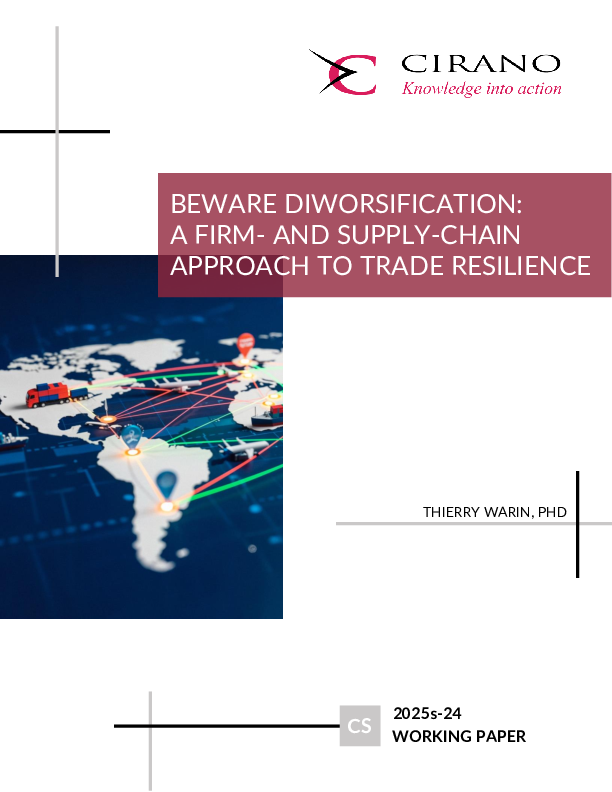The Québec's Experiment of $5 per Day per Child Childcare Policy and Mother's Labour Supply: Evidence Based on the Five Cycles of the NLSCY
On September 1st, 1997, a new childcare policy was initiated by the provincial government of Quebec, the second most populous province in Canada. Childcare services licensed by the Ministry of the Family (not-for-profit centres, family-based childcare, and for-profit centres under the agreement) began offering day care spaces at the reduced parental contribution of $5 per day per child for children aged 4 years. In successive years, the government reduced the age requirement and engaged in a plan to create new childcare facilities and pay for the cost of additional $5 per day childcare spaces. By September 2000, the low-fee policy applied to all children aged 0 to 59 months (not in kindergarten) and the number of partly subsidized spaces increased from 77,000 in 1998 to 163,000 spaces, totally subsidized by the end of year 2002, while the number of eligible children, zero to four years old, declined from 428,000 to 369,000 over the same period. Using data drawn from Statistics Canada's National Longitudinal Survey of Children and Youth (NLSCY), this study attempts to estimate the effect of the policy on the labour supply behavior of Quebec mothers with pre-school children, aged from 0 to 5 years old. The analysis examines the impact of the policy on the following outcomes: labour force participation and annual number of weeks at work. A non-experimental evaluation framework based on multiple pre- and post-treatment periods is used to estimate the effect of the childcare regime. The econometric results support the hypothesis that the childcare policy, together with the transformation of public kindergarten from a part-time to a full-time basis, had a large and statistically significant impact on the labour supply of Quebec's mothers with pre-school children. The estimates also suggest, though less convincingly, that the size of the impact increased concurrently with the positive growth in the number of low-fee spaces.
[ - ]




